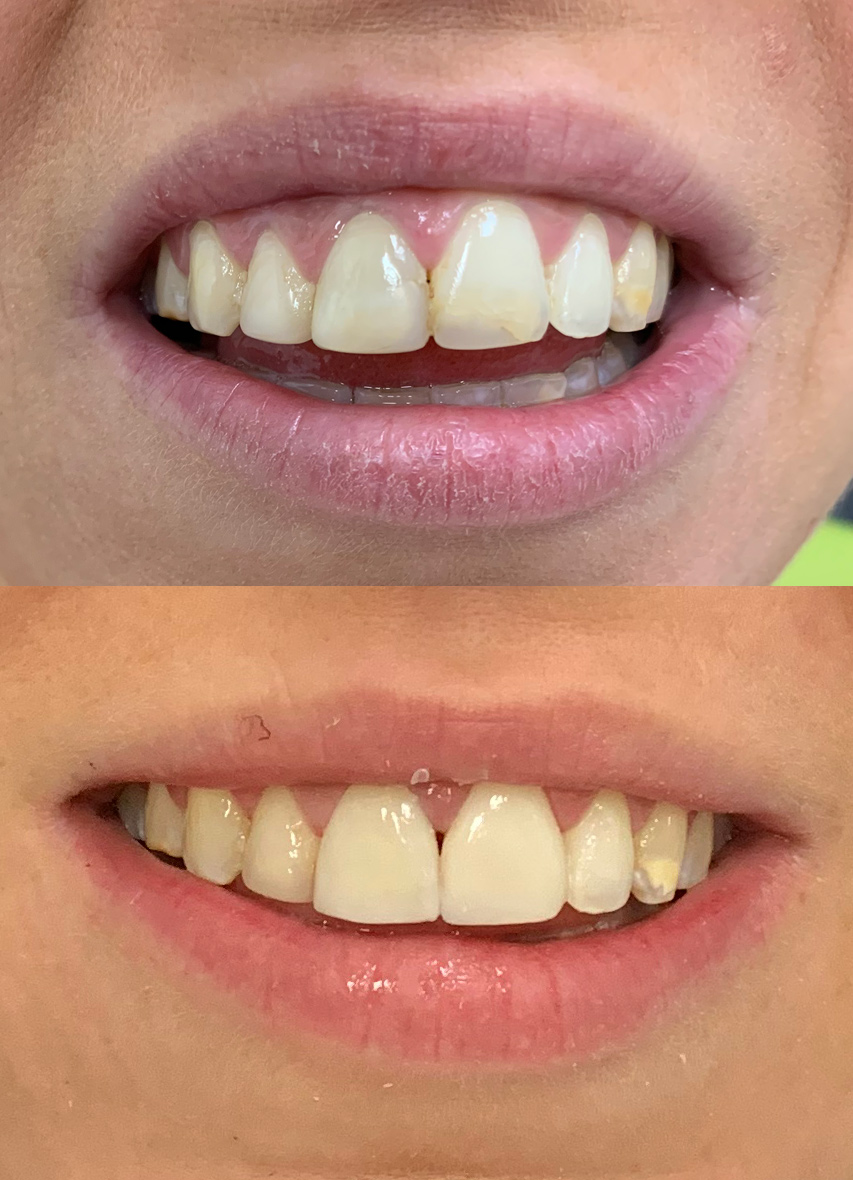Veneering teeth basically means putting a cover over the front of each tooth to mask stains, discolourations and to reshape the teeth to give a more uniform appearance.
Dental veneers can be used as an alternative to orthodontics, provided the crowding is mild.
Veneering allows the teeth to become symmetrical in appearance which balances the smile. How much the dentist needs to cut the teeth depends on how much change is required.
The case displayed here was with an adult patient who did not want braces.
Antibiotics taken in childhood had stained her teeth and this could not be removed with bleaching. Her request was for Straight Teeth with a Uniform Colour.
The teeth needed to be cut back to allow the veneers to fit into the new space, and give the appearance of being aligned.
Otherwise the veneers would be just as crooked as the original teeth. There was mild sensitivity after the anaesthetic wore off, but this settled quickly.
At the fitting visit the teeth were numbed once again. The temporary veneers were lifted off and the porcelain veneers were bonded into place.
One of the great advantages of porcelain veneers is that they are made by experienced dental technicians who craft the porcelain by hand, before firing them in a very hot kiln to cure the ceramic.
The veneers are individually polished to a very high lustre, right in between where the teeth contact. Dental drills cannot get to these areas to polish effectively when working in the mouth. Only when working on veneers on the bench top can such precision be achieved. This allows dental floss to glide between the teeth with ease, once bonded.
The smooth finish helps with hygiene and good hygiene ensures the veneers will appear fresh and vibrant for many years.













